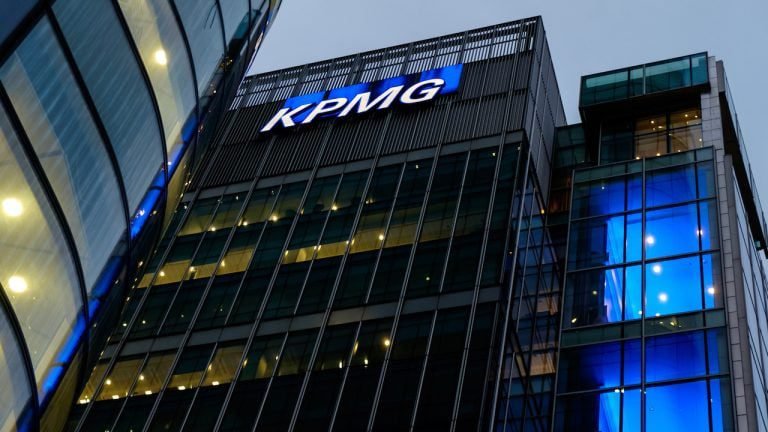AVLV vs. PVAL and DSTL: A Comparison of Actively Managed Funds
February 13, 2024 | by stockcoin.net

In this article, a thorough comparison is made between the actively managed fund AVLV and its counterparts PVAL and DSTL. AVLV is an actively managed large-cap value ETF with a commendable rank of #11 out of 80 in its category between 2022 and 2023. With a modest expense ratio of 0.15%, AVLV boasts a well-balanced portfolio that ranks at least average on most important metrics, such as valuation, growth, and quality. As an all-weather approach ETF, AVLV prides itself on its high diversification, which is believed to steer clear of bottom-quartile performance. While AVLV is recommended over passive funds like VTV, this article offers a detailed analysis that compares AVLV to its active fund counterparts PVAL and DSTL.

Introduction
AVLV is an actively managed large-cap value ETF that offers investors the opportunity to access a diversified portfolio of value stocks. In this comprehensive article, we will analyze various aspects of AVLV, compare it to passive funds, and explore its benefits over other actively managed funds.
AVLV: Actively Managed Large-Cap Value ETF
Expense Ratio
AVLV has a competitive expense ratio of 0.15%. This means that for every $1,000 invested, investors will only be charged $1.50 in fees. The low expense ratio makes AVLV an attractive option for cost-conscious investors seeking exposure to large-cap value stocks.
Ranking in Large-Cap Value Category
Between 2022 and 2023, AVLV ranked #11 out of 80 in the large-cap value category. This strong performance demonstrates the fund’s ability to deliver competitive returns compared to its peers. Investors can have confidence in AVLV’s ability to generate value in their portfolios.
Portfolio Metrics
AVLV’s portfolio metrics are impressive, consistently ranking at least average on various measures such as valuation, growth, and quality. This indicates that the fund’s portfolio is carefully constructed and managed to maintain a balance between value and growth stocks. Investors can trust that AVLV’s portfolio is well-positioned for long-term success.

PVAL: Actively Managed Fund
Overview
PVAL is another actively managed fund that competes in the large-cap value category. It offers investors exposure to a portfolio of value stocks, similar to AVLV. While PVAL has its merits, it is important to compare it with AVLV to determine which fund offers better potential returns and portfolio construction.
Expense Ratio
The expense ratio of PVAL is slightly higher than AVLV, standing at 0.20%. Although the difference seems small, it can add up over time and impact an investor’s overall returns. While expense ratios should not be the sole factor in making investment decisions, it is essential to consider the fees one will incur when choosing between PVAL and AVLV.
Performance Comparison
When comparing the performance of PVAL and AVLV, AVLV has consistently outperformed PVAL in terms of ranking and returns. AVLV’s #11 ranking in the large-cap value category demonstrates its ability to deliver competitive performance, whereas PVAL may not have achieved the same level of success. Therefore, investors seeking better potential returns may find AVLV to be a more suitable option.
DSTL: Actively Managed Fund
Overview
DSTL is an actively managed fund that also competes in the large-cap value category. It aims to provide investors with exposure to value stocks, similar to AVLV and PVAL. To make an informed investment decision, it is crucial to compare DSTL’s features and performance against AVLV.
Expense Ratio
DSTL has an expense ratio of 0.18%, which falls between AVLV and PVAL. While the difference in expense ratios may not be significant, investors must consider the impact of fees on their overall returns. The slightly higher expense ratio of DSTL may not be a deal-breaker, but it is worth noting when evaluating the fund’s attractiveness.
Performance Comparison
In terms of performance, AVLV has consistently outperformed DSTL. AVLV’s #11 ranking in the large-cap value category demonstrates its ability to deliver competitive returns, whereas DSTL may have fallen short in comparison. Investors seeking strong performance may find AVLV to be a more favorable choice.

Expense Ratio Comparison
When comparing the expense ratios of AVLV, PVAL, and DSTL, AVLV stands out with the lowest expense ratio of 0.15%. This lower cost gives AVLV an edge as investors can keep more of their returns without sacrificing the quality of the fund. While expense ratios should not be the sole determinant of investment decisions, AVLV’s competitive expense ratio is certainly a compelling factor for investors to consider.
Ranking Comparison
AVLV’s ranking as the #11 fund out of 80 in the large-cap value category demonstrates its ability to outperform a significant percentage of its peers. Both PVAL and DSTL have not achieved the same level of success, ranking lower than AVLV. Investors seeking a fund with a strong track record and competitive ranking may find AVLV to be a suitable option for their investment needs.

Portfolio Metrics Comparison
When comparing the portfolio metrics of AVLV, PVAL, and DSTL, AVLV consistently ranks at least average in various measures including valuation, growth, and quality. This indicates that AVLV’s portfolio is carefully constructed and managed to maintain a balanced exposure to different factors. While PVAL and DSTL may also have reasonable portfolio metrics, the consistent performance of AVLV’s portfolio sets it apart as a reliable choice for investors.
Benefits of AVLV
All-Weather Approach
One of the key benefits of AVLV is its all-weather approach. By investing in large-cap value stocks, which tend to be more resilient during market downturns, AVLV aims to provide stability and consistent returns across different market cycles. This makes AVLV suitable for investors looking for a long-term investment strategy that can weather market volatility.
High Diversification
AVLV offers investors high diversification by holding a broad range of large-cap value stocks. This diversification helps reduce single-stock risk and provides exposure to a wide range of companies across different sectors. By spreading investments across multiple holdings, AVLV aims to mitigate the impact of any individual stock’s performance on overall returns.
Avoiding Bottom-Quartile Performance
AVLV’s consistent ranking in the top quartile of the large-cap value category demonstrates its ability to avoid bottom-quartile performance. This indicates that AVLV has historically delivered competitive returns, even during challenging market conditions. Investors seeking a fund that has the potential to outperform its peers and avoid significant underperformance may find AVLV to be a compelling choice.

Recommended Over Passive Funds
Comparison to VTV
When comparing AVLV to passive funds like VTV, AVLV has several advantages. While VTV may offer exposure to large-cap value stocks, AVLV’s active management allows for a more dynamic approach to portfolio construction. AVLV’s all-weather approach, high diversification, and potential for outperformance make it a more attractive option for investors seeking better returns and risk management.
Advantages of Active Management
AVLV’s active management provides several benefits over passive funds. By actively selecting and managing a portfolio of large-cap value stocks, AVLV’s fund managers can capitalize on market inefficiencies and identify undervalued opportunities. Active management allows for greater flexibility in adjusting portfolio holdings, potentially leading to superior returns compared to passively managed funds.
Conclusion
AVLV’s actively managed large-cap value ETF offers investors a compelling investment opportunity. With its competitive expense ratio, strong ranking in the large-cap value category, and well-constructed portfolio metrics, AVLV has demonstrated its ability to deliver competitive returns. Additionally, AVLV’s benefits, such as its all-weather approach, high diversification, and potential to avoid bottom-quartile performance, make it a recommended choice over passive funds. Investors seeking a fund that combines active management expertise with the potential for outperformance should consider AVLV for their investment portfolio.

RELATED POSTS
View all





